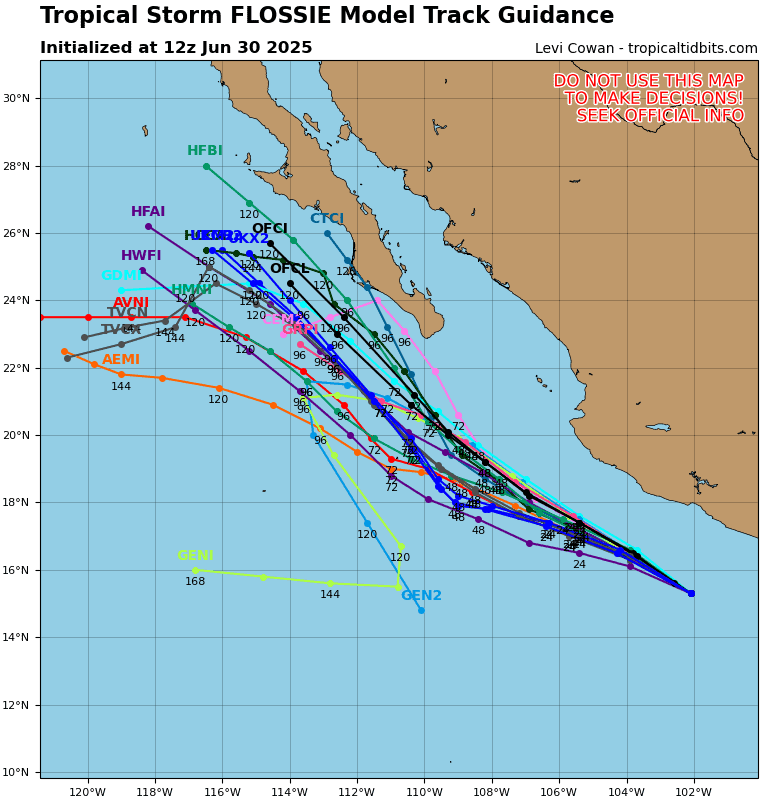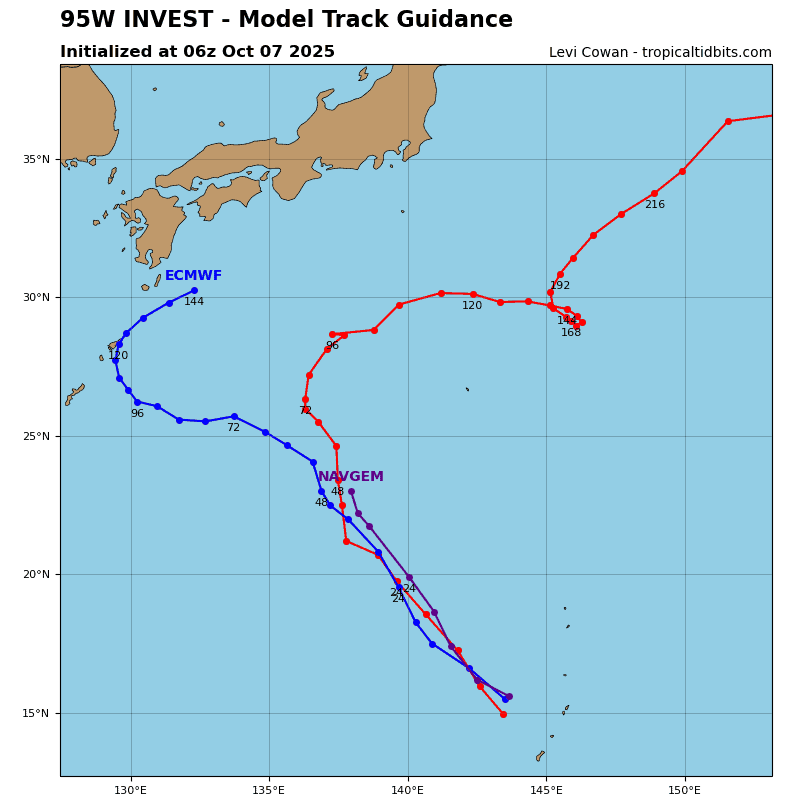Current Snapshot
For all the latest updates visit: DisasterAWARE
By PDC’s Senior Weather
Specialist Glenn James

The Pacific Disaster Center’s (PDC Global) Sunday, August 6, 2023, Tropical Cyclone Activity Report…for the Pacific Ocean, the Indian Ocean, and adjacent Seas
Current Tropical Cyclones:
Tropical Cyclone 05E (Dora)…is located about 890 miles east-southeast of South Point, Hawaii
Tropical Cyclone 06E (Eugene)…is located about 325 miles west of the southern tip of Baja California
Tropical Cyclone 06W (Khanun)…is located approximately 326 NM south-southeast of Sasebo, Japan
Northeast Pacific Ocean:
Tropical Cyclone 06E Eugene
EUGENE CONTINUES MOVING AWAY FROM BAJA CALIFORNIA SUR
According to the NHC advisory number 7…
Eugene is moving toward the west-northwest near 20 mph (31 km/h), and this motion should continue for the next day or so, followed by a turn to the north and a sharp reduction in forward speed. Eugene should continue moving farther away from Baja California Sur.
Maximum sustained winds have decreased to near 60 mph (95 km/h) with higher gusts. Eugene is forecast to weaken to a tropical depression on Monday.
Tropical-storm-force winds extend outward up to 80 miles (130 km) from the center.
Hazards Affecting Land
SURF: Swells generated by Eugene will affect portions of the coasts of west-central Mexico and Baja California Sur during the next day or so. These swells are likely to cause life-threatening surf and rip current conditions.
Central Pacific Ocean:
Tropical Cyclone 05E (Dora)
DORA CONTINUES AS A MAJOR HURRICANE ON A WESTWARD TRACK IN THE CENTRAL PACIFIC BASIN
According to the NHC advisory number 27…
Dora is moving toward the west near 22 mph (35 km/h) and this motion is expected to continue for the next several days.
Maximum sustained winds are near 140 mph (220 km/h) with higher gusts. Dora is a category 4 hurricane on the Saffir-Simpson Hurricane Wind Scale. Minor fluctuations in intensity are possible during the day or so, with gradual weakening beyond.
Hurricane-force winds extend outward up to 25 miles (35 km) from the center and tropical-storm-force winds extend outward up to 70 miles (110 km).
Western Pacific, Indian Ocean and adjacent Seas:
Western Pacific…
Tropical Cyclone 06W (Khanun)
According to the JTWC Warning number 44…
Sustained winds were 55 knots…with gusts to near 70 knots
Tropical storm 06W has maintained intensity at 55 knots with a slow and erratic track over the past 18 hours due to the presence of multiple meso-vortices rotating within a broad, exposed center. Animated satellite imagery and animated radar imagery show persistent convective banding wrapping into a defined low-level circulation center (llcc). A color composite microwave image shows tightly-curved banding wrapping into a defined llcc
Environmental conditions remain marginally favorable with significant dry air in the mid to upper levels indicated in the recent Kagoshima and Naze soundings. However, the deep convective structure has maintained due to low vertical wind shear, warm sea surface temperatures and moderate equatorward venting.
TS 06W is wobbling slowly southeastward along the northwestern periphery of the weak ridge and is expected to slowly turn poleward within the next 12 hours. Track speeds remain slow due to a developing tropical disturbance to the east, which is disrupting the ridge. The system’s slow track motion is resulting in persistent heavy rainbands and gale-force winds sustaining over Okinawa.
After 12 hours, TS 06W will turn north-northwestward and gradually intensify due primarily to improving poleward outflow to a peak of 65 to 70 knots by 72 hours. As the large (600 NM diameter) system tracks parallel to the western coast of Kyushu, it will gradually weaken due to frictional effects with more significant weakening as it approaches the Busan region with landfall anticipated near 84 hours.
After 84 hours, TS Khanun will track along the eastern portion of the Korean Peninsula and begin interacting with the leading edge of a subtropical shortwave trough and weak baroclinic zone. Despite the baroclinic influence, the system is forecast to dissipate as it tracks into North Korea and northeast China.
>>> There’s an area of disturbed weather being referred to as Invest 95W…which is located approximately 372 NM east of Iwo To, Japan.
Animated multi-spectral satellite imagery and a microwave satellite pass reveal deep convective bands organizing in the southeastern portion of a quickly consolidating, partially obscured low level circulation center.
Environmental analysis indicates 95W is in a favorable environment for intensification due to warm sea surface temperatures, low (5-10 knot) vertical wind shear, and good equatorward outflow.
Global models are in fair agreement that 95W will quickly intensify over the next 24 hours, while turning back towards the west-northwest.
Maximum sustained surface winds are estimated at 18 to 23 knots.
The potential for the development of a significant tropical cyclone within the next 24 hours is upgraded to high.
















